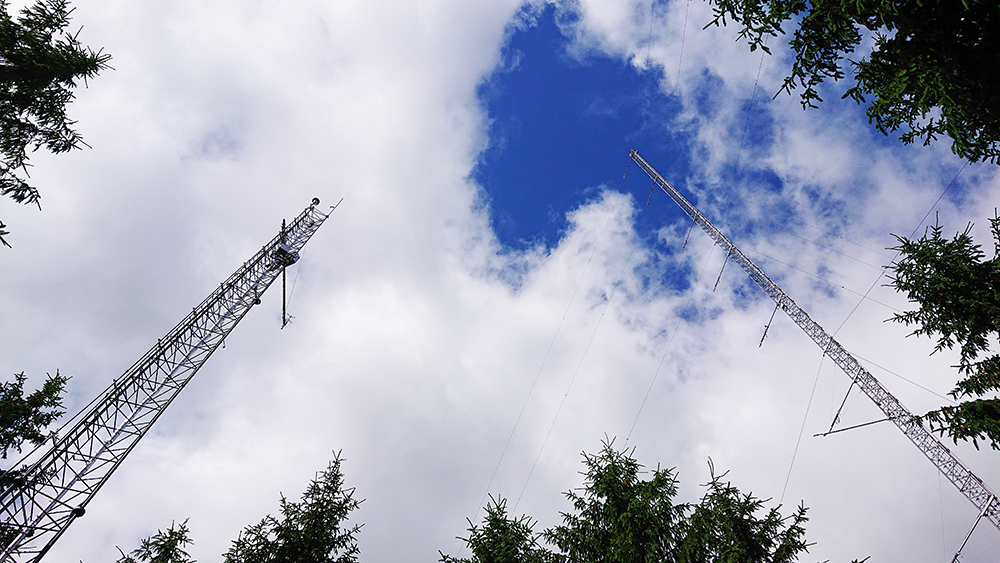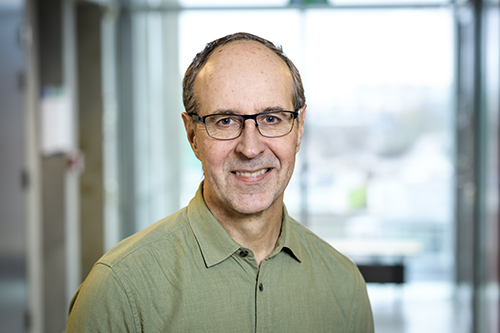Atmospheric research in Europe reaches new heights
ACTRIS is a state-of-the-art European research infrastructure within atmospheric science. The European Commission has now decided to establish ACTRIS ERIC – a consortium for research infrastructures linked to aerosols, clouds and reactive trace gases in order to increase knowledge about climate change and air pollution. The consortium includes 17 countries which contributes to a broad spectrum of measurements data, services and resources within atmospheric science.
Jessika Sellergren – Published 5 May 2023

ACTRIS facilities make up the largest atmospheric research infrastructure in the world. It offers users access to instruments, expertise, training opportunities, and data management services – services that are open to all and are aimed at increasing excellence in Earth system observation and research.
The ERIC status designates an infrastructure of particular European interest and is considered a legal entity in all EU member states. Finland is the host for ACTRIS ERIC and is responsible for overall coordination, while Italy handles access to the services on offer. The establishment of an ACTRIS ERIC increases possibilities to further develop and run the infrastructure.
Eija Juurola is the Interim ACTRIS Leader in Europe. In the press release from ACTRIS, she states:
“This decision means the ACTRIS facilities can now operate legally together, as one organisation. The decision comes at an important time since the transition to operations is already happening, and the synergies with scientists and industry are continuously developing.”
Increase knowledge about the driving forces behind climate change
ACTRIS entered its journey towards ACTRIS-ERIC as early as 2011, achieving important scientific and technical milestones that led to a deeper understanding of the driving forces of climate change and air pollution. Monitoring the spatial and temporal variability of short-lived atmospheric constituents (aerosol, clouds, and trace gases) from 80 observation platforms in Europe and beyond over more than a decade provided unique insights into the effectiveness of policies and measured aimed at improving air quality and thereby reducing emissions in Europe. The observations also highlight the complex feedback mechanisms that affect the climate system.
Paolo Laj is the Interim Scientific Chair of ACTRIS ERIC. In the ACTRIS press release, he says:
“Thanks to concentrated international cooperation, in just ten years we have been able to build and make operational state-of-the-art scientific instruments that open up unprecedented opportunities for breakthrough discoveries.”
Hundreds of researchers worldwide, but also users from the private sector, have accessed the ACTRIS platforms. Every year, over 5,000 users distributed across 50 countries use the ACTRIS data for their research. This enables reliable atmospheric predictions, including short-term hazardous weather and air pollution health warnings, as well as the long-term evaluation of climate change.
ACTRIS Sweden
ACTRIS Sweden is national research infrastructure that makes observations of short-lived air pollution that impacts the climate. Lund University is the host of the infrastructure, and since 2022 it has been funded with support from the Swedish Research Council. Sweden is one of 17 countries that is co-founding ACTRIS ERIC.
Erik Swietlicki, professor of physics who conducts research on aerosols, is the chair of ACTRIS Sweden. He says:
“The establishment of the European ACTRIS ERIC is very important for Swedish researchers, public authorities and businesses. Our activities will have a completely different continuity through these joint systems for quality assurance and data management.”
Five Swedish universities and the Swedish Meteorological and Hydrological Institute (SMHI) form ACTRIS Sweden, and together they run five field research stations and a mobile research platform: Hyltemossa in Skåne, Norunda in Uppland, Zeppelin on Svalbard, Svartberget in Västerbotten, Östergarnsholm on the island of Gotland and the mobile platform for the observation of aerosols and reactive trace gases.
Co-location with ICOS ERIC
ACTRIS Sweden has chosen to co-locate all five of its research stations with ICOS ERIC, an equivalent European infrastructure for observations of long-lived greenhouse gases. The Swedish Research Council is now evaluating the possibilities for the coordination of the three Swedish field research infrastructures ACTRIS Sweden, ICOS Sweden and SITES, a national infrastructure for ecosystem research.
“One of the aims is to broaden the user base, especially in relation to researchers who choose to make use of our joint research stations in order to conduct their research projects. Co-localisation will also benefit public authorities and businesses. Especially Earth system research, such as in the exchange and interplay between the atmosphere and land ecosystems, will benefit enormously from coordination, as the different infrastructures make observations of different parts of this complex system,” says Erik Swietlicki.
Erik Swietlicki argues that the freely available data that ACTRIS Sweden and ACTRIS ERIC deliver is necessary for the development and testing of many models that relate to the atmosphere and the interplay with land ecosystems. He mentions climate models, Earth system models, models that relate to the dynamics of aerosols and chemical processes in the atmosphere, distribution models for the calculation of air quality and the fall of particles to land and water, as well as estimating the impact on health caused by air pollution using epidemiological models.
“A lot of this model development in Sweden is occurring within the two strategic research areas and climate research centres MERGE and the Bolin Centre for Climate Research,” says Erik Swietlicki.
What is a research infrastructure?
Research infrastructures are facilities, resources and related services that are used by the academic community to drive research and promote innovation. This includes scientific equipment and expert networks, as well as the accompanying e-infrastructures and data management systems. Their development since 2002 has been coordinated through ESFRI, the European Strategy Forum on Research Infrastructures.
What is an ERIC?
An ERIC is a consortium for European research infrastructures – a legal entity formed through special EU legislation in order to facilitate the establishment and operation of research infrastructures of European interest. An ERIC gives research infrastructures status as a legal entity in all the EU’s member states. The members of these international organisations are the countries that share science and contribute financially to the consortium.

Erik Swietlicki
Erik Swietlicki is a Professor in Physics and the Head of ACTRIS Sweden.
ACTRIS press release
Erik Swietlicki describes ACTRIS:
ACTRIS is a research infrastructure financed by the member countries. The total investment made to date by the member countries is around EUR 700 million, of which a large part is earmarked for the upgrading of existing national facilities as well as the building of new ones.
ACTRIS’ national facilities are spread across the 17 member countries that make up ACTRIS ERIC: Austria, Belgium, Bulgaria, Cyprus, Czechia, Denmark, Finland, France, Germany, Italy, the Netherlands, Norway, Poland, Romania, Spain, Sweden and Switzerland. By engaging in this way, the member states are showing that atmospheric and air quality research is a national priority and that they support scientific excellence in this area across Europe.
The researchers that use ACTRIS can conduct interdisciplinary studies within basic and applied research. This can result in considerable benefits to society through enabling effective climate and environmental policies and strategies to minimise the emission of different pollutants in a way that also improves air quality and mitigates climate change. It also helps the EU reach its Green Deal goals.
Kontakt ACTRIS
ACTRIS Sverige
- Erik Swietlicki, föreståndare för ACTRIS Sverige, Lunds universitet (värdorganisation)
- Adam Kristensson, Lunds universitet, ansvarig för ACTRIS Hyltemossa
- Radovan Krejci, Stockholms universitet, vetenskaplig föreståndare för ACTRIS Sverige Norunda och Zeppelin
- Mattias Hallquist, Göteborgs universitet, ansvarig för ACTRIS mobila plattform
- Mats B Nilsson, Sveriges lantbruksuniversitet, SLU Umeå, ansvarig för ACTRIS Svartberget
- Anna Rutgersson, Uppsala universitet, ansvarig för ACTRIS Östergarnsholm
- Salomon Eliasson, SMHI, ansvarig för ACTRIS molnradar, Norunda
ACTRIS huvudkontor
- Eija Juurola, tillförordnad föreståndare för europeiska ACTRIS
- Paolo Laj, tillförordnad vetenskaplig föreståndare för ACTRIS ERIC
